Certain things are symbolic of the American West — like the cowboy and Kokopelli and the cactus. And few cacti are more iconic that the saguaro, a giant, tree-like cactus shaped like a dancing candelabra. Among saguaro, no two are identical. (Some are actually comical.) This unique plant is also the namesake for Saguaro National Park. (And, also comically, few people know how to pronounce it correctly.)
But pronunciation problems have never kept travelers from entering this Western spectacle of beauty. Fact is, once you experience this fascinating desert garden in the heart of the spectacular Sonoran Desert in Arizona, we guarantee that its poetic pronunciation of “se-WAH-ro” will simply roll off your tongue!
So, if you’re thinking of rolling into this national park with your RV, we’d love to share some tips that will help you make it an unbelievable road trip.
Scenic Drives
Saguaro National Park has two distinct sections: the Rincon Mountain District to the east and the Tucson Mountain District to the west. The sections are divided by the city of Tucson, Arizona, which is in the heart of an snowbird’s winter paradise. All of which makes this park an ideal destination during the cooler months.
Both districts of Saguaro National Park offer scenic drives around a forest of cacti, each with a magnificent number of saguaros! However, before you get started, be advised: Trailers longer than 35 feet, or any vehicle wider than eight feet, are not permitted on either of the following scenic drives.
Rincon Mountain District (East)
The Cactus Forest Scenic Loop Drive is a paved eight-mile road that features several trailheads, scenic vistas, and pullouts; but it does not offer parking for RV’s or larger vehicles.
Tucson Mountain District (West)
The Scenic Bajada Loop Drive is a great way to explore the foothills and take in the stunning views of the Tucson Mountains and the dense cactus forest! This six-mile unpaved, graded dirt road offers scenic pullouts, picnic areas, and hiking trailheads. High clearance or four-wheel drive is not needed to drive the loop.
Must-Hike Trails
When hiking in Saguaro National Park, wear sturdy shoes or boots, hydrate before hiking, bring plenty of water along, and check the weather for daytime highs and potential thunderstorms. While most of the park’s hikes are easy to moderate, the sun and heat of the desert can transform a short, easy hike into a very strenuous day. Be prepared and have fun! Please note which district these trails are located.
Easy
Freeman Homestead Nature Trail. Wander down this loop path to the site of an old homestead foundation, a grove of large saguaros and a cool desert wash. Interpretive signs share the history of the area and plant life along the way. Rincon District, 1-mile loop
Wild Dog Trail. This trail begins from the parking lot off Hohokam Road and takes you into the national park. While short, be prepared for sandy desert hiking, loose rock, and no shade. You’ll enjoy tall saguaro and beautiful views. Great for a short sunset hike! Tucson Mountain District, 1.9 miles out and back
Moderate
Hope Camp Trail to Ridge View Trail. From the Loma Alta Trailhead, take the Hope Camp trail for one-tenth of a mile until meeting the Ridge View Trail, then take a left and begin to climb in elevation. Views of Rincon Peak appear after a brief slope, and get even better as you go up further. Towards the end of the trail, there are incredible panoramic views and brilliant seasonal wildflowers. The trail ends at the top, with an incredible view into Box Canyon. Rincon District, 2 miles out and back, 400 feet elevation
*Note: If you continue along the Hope Camp Trail, you’ll find two old cowboy camps marked with windmills. Hope Camp Trail is a multiuse trail, so expect to see mountain bikers.
King Canyon & Gould Mine Trails. This trail begins in a sandy wash bottom between the canyon walls to the junction and returns via the King Canyon trail (an old mining road). There are several rocky “stair-step like” sections in the wash bottom. You’ll enjoy spectacular views of saguaro and many other cacti varieties along the way. Tucson Mountain District, 2.5-mile loop, 400 feet elevation
Challenging
Tanque Verde Ridge Trail. While considered strenuous, the views and seasonal wildflowers are certainly worth the hike up! In less than a mile, you’ll reach the ridge with a greater than 280-degree view, including the Tucson Basin and other mountain ranges. A couple of miles in you’ll come upon a unique, crested saguaro. Then a bit further up, you’ll reach “The Dome,” which offers even more breathtaking views. This trail continues to Juniper Basin Campground (6.9 mile mark, 3000 feet elevation) as well as Tanque Verde Peak (8.7 miles, 4000 feet elevation). Rincon District, distance and elevation vary depending on length
RV Parks & Campgrounds
Park Campgrounds
Unfortunately, there are no accommodations for any vehicle, RV, or van camping inside of Saguaro National Park. Backcountry, hike-in wilderness camping is available within park boundaries and is available by wilderness permit only.
Public and Private Campgrounds
With the city of Tucson splitting the park into two distinct districts and serving as a winter RVers paradise, state parks, county parks, and privately-operated campgrounds abound in the surrounding area. The Dyrt PRO camping app will provide all the details you may need to find a spot to park your rig while exploring the nearby national park.
For boondocking and dispersed camping options, check out the nearby options of Redington Pass (GPS: 32.2555, -110.6622), Snyder Hill BLM (GPS: 32.1567, -111.1157), and Old Ajo Highway (GPS: 32.1614, -111.1038). For current road surface conditions, which can vary from well-graded to deeply rutted, check out the iOverlander app for recent reviews.
Seasonal Advice
While some may think that the desert lacks seasonal changes at all, there are actually five distinct seasons in the Sonoran Desert which bring with them fascinating changes to the landscape.
Summer – July to Mid-September
Summer monsoon season is the most dramatic weather event of the year. Tropical air creates humidity and moderates June’s extreme temperatures by providing frequent thunderstorms, and is the main growing season for many of the larger shrubs and trees.
Fall – October to November
Autumn brings warm temperatures, low humidity, and little rain. A few cactus species flower this time of year. Autumn and late summer occasionally receive heavy rains from Pacific hurricanes.
Winter – December to February
Winter in the desert brings mostly sunny, mild days, with intermittent storms bringing wind, rain, and cool to cold temperatures. February is often warm and dry, and feels more like spring.
Spring – February to April
Spring brings mild temperatures with little rain and is often windy. It is the main flowering season for annuals, shrubs, and trees. Some winter annuals may bloom in February in warm, wet years.
Foresummer – May to June
The foresummer drought brings high temperatures with very low humidity or rain most years. May is very warm and often windy, while June is hot and usually calm. Nearly every living thing is in basic survival mode until the rains arrive later in the summer. There is little biological change during this season except for the flowering and fruiting of saguaro, foothill Palo Verde trees, and desert ironwood trees.
Unique Programs & Opportunities
While this unique park is relatively small, there are some fascinating things to see and do. Plan plenty of time to explore this park, or make note of what you may do on a return visit. Come prepared for whatever nature brings your way, drink plenty of water at all times of the year, and you’ll have a wonderful time exploring this fascinating national park!
Fun Activities
Ranger-Led Programs. Available year-round, guided programs are a great way to learn about the park. From January – April, many different programs are offered daily. During the summer, only a few programs are offered due to extreme heat.
Petroglyphs. The Signal Hill Petroglyph Site (Tucson Mountain District) has about 200 prehistoric Native American petroglyphs from 550-1550 years ago, many of which can be seen from the trail that ascends the hill.
Biking. Bring your bikes or e-bikes! Tucson is one of the most bicycle-friendly cities in the US and a popular way to enjoy the scenic loop drives mentioned above. There are also several multi-use trails in and around the park.
Amazing Sunrise and Sunsets
Some of the most stunning times to experience the desert are at the beginning and end of the day, when the low angle sunlight enhances the diversity of desert hues and illuminates its many moods.
Rincon Mountain District (East). Best views can be found along Cactus Forest Scenic Loop Drive, Tanque Verde Ridge Trail, and the Javelina Rocks pull-out along the scenic loop drive.
Tucson Mountain District (West). Gates Pass in Tucson Mountain Park, a few miles southeast of the Tucson Mountain District is ideal for watching the sunset. (*Note: Vehicles over 25 feet in length are not recommended as it is a steep, winding road to and from the overlook.) The Wild Dog Trail is also an ideal spot to watch the sun go down.
Cactus Pointers
Concerning saguaro, these fascinating slow growing cacti rely on a Palo Verde “nurse tree” to provide shade during the first part of its life in order to survive the desert heat. Saguaro are usually only 1 to 1.5 tall at eight years old. They begin to grow arms between ages 50 and 70, and can occasionally develop unique crests. Saguaro may live to nearly 200 years old, and if you are lucky enough to be in the region at the right time of year, you’ll get to see the local pollinators buzzing around their “floral crowns.”
However, saguaro are just the beginning of the fascinating cacti growing in the beautiful gardens throughout this national park. Others with intriguing names such as Pink Hedgehog, Cow-Tongue Prickly Pear, Fishhook Barrel, Organpipe Cactus, Queen of the Night, Teddy Bear Cholla, Pancake Prickly Pear, and more speckle the Sonoran desert landscape. Each bloom at a different times of the spring and summer. Explore the cactus gardens found just outside of both of the park’s visitor centers. Then enjoy a scenic drive or hike to see even more desert flora diversity.
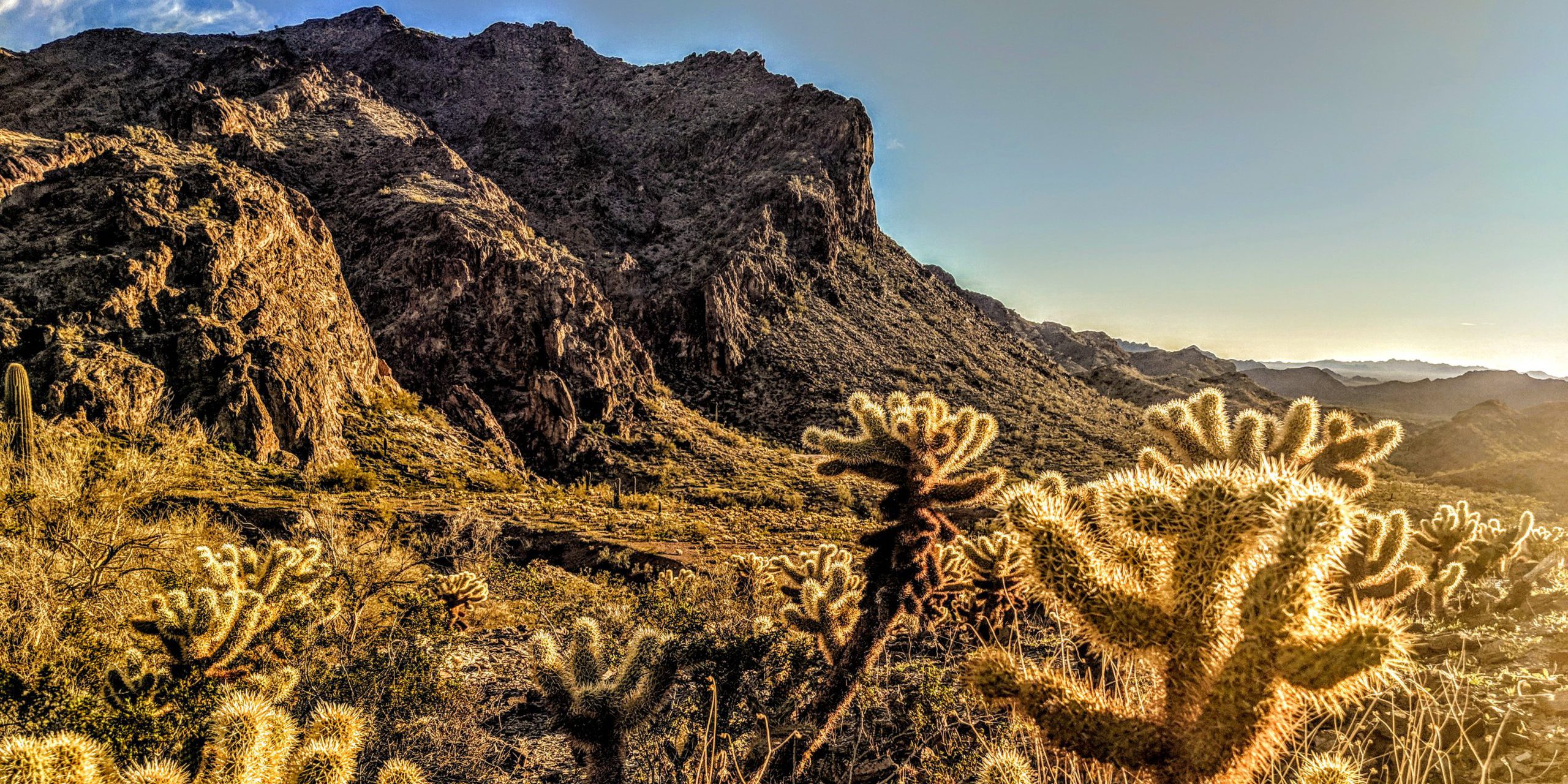
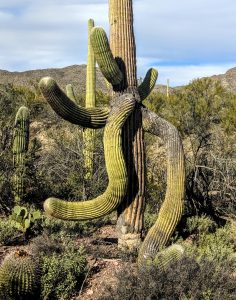
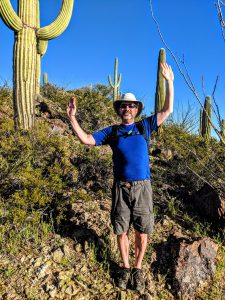
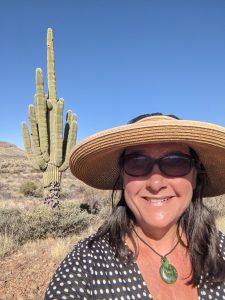
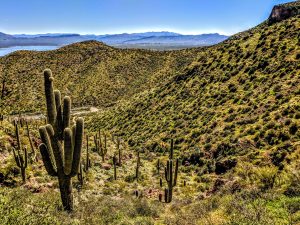
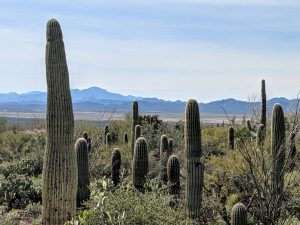
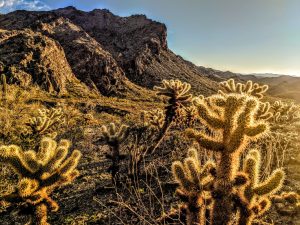
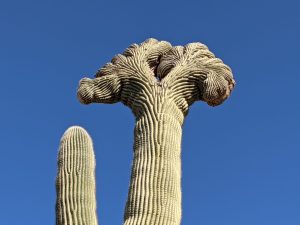
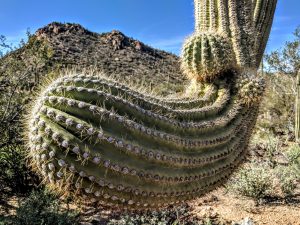
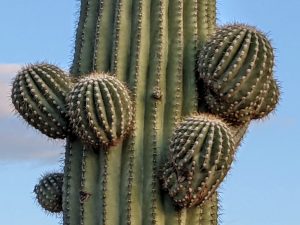
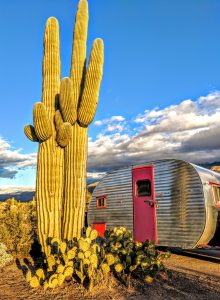
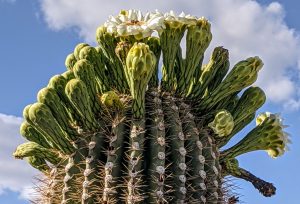
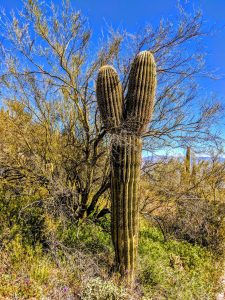
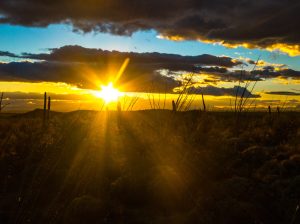
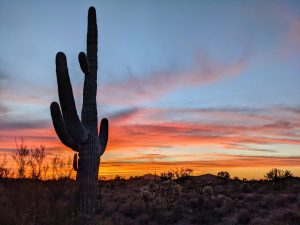
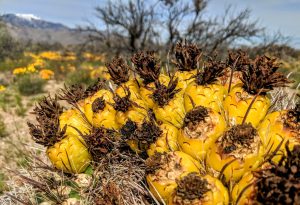
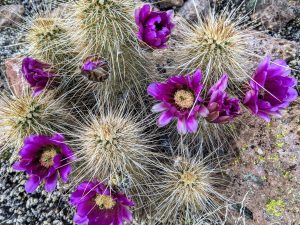
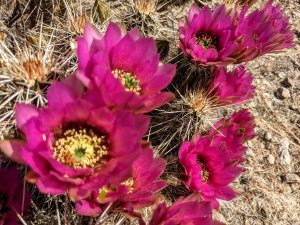

Leave a Reply